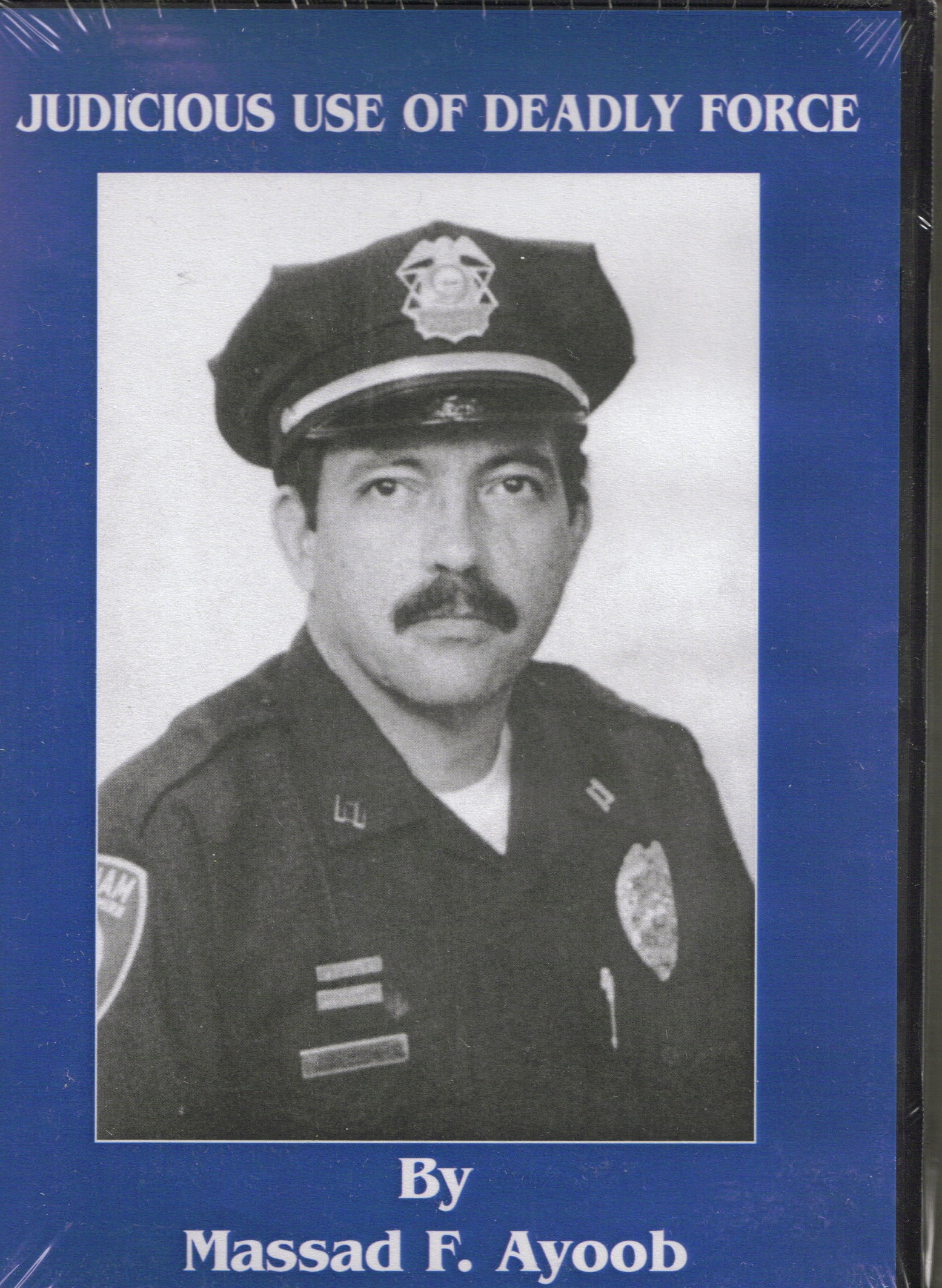|
In This Hub: Control Presence Controlling Attack Range Controlling Where He Attacks Criminals Counting Coup De-Escalation Defensive Tactics Economy & Stress Violence Effective Movement Negotiation In Extremis Pain as Motivation Secondary Victory Shadow Dance Threat Display LEO Hub NNSD Home Page
Marc MacYoung? |
It is
folly to imagine that the aggressive types can be bought
off, Control vs. Command Presence On this page: A term now popular in LEO training circles is 'command presence.' This term is commonly bandied about in training and in administration. Unfortunately, there's a big difference between theory and practice. While we're on that subject, exactly what is and isn't command presence gets a little fuzzy in practical application. As can: How do you establish it out in the streets (or in the jail)? So to does: When does command presence provoke violence instead of prevent it? While we're on the subject, it's not exactly all that simple when someone doesn't particularly like what your command voice is telling him to do. In fact, he might have other ideas about what he wants to do. Such a person might even go so far as to get somewhat testy about you telling him or her what to do. Then what are you going to do? Any and all of these can make establishing command over the situation difficult. It isn't enough just to tell someone what to do, you have to be in a position to enforce it AND keep someone from coming up with his own option for response. Command Presence (And Why We Have
Problems With The Idea) And at that moment, there had better be something else up your sleeve. In the use of force continuum, you are justified taking it up to the next level when a suspect has failed to respond to your command presence. He's decided to ignore you, and now you have to work twice as hard to convince him that his behavior is unacceptable. The bad news is, you're now playing catch up. No matter what level of unreasonableness he takes it to, you have to not only catch up, but pass him in order to blockade further escalation. If this were a foot race, you would have to run twice as fast to get in front of him to be able to stop him. Unfortunately, many officers really don't manage to get ahead to form a blockade. In many ways, this is not their fault. In other ways, it is. We believe that there are two kinds of authority that an officer must bring to the table: Institutional and Individual. If you go into any situation with only one form up your sleeve, you're heading for trouble. And by this, we especially mean relying on your institutional authority to carry your command presence for you. In this case, command presence becomes a bluff and the violent person you are facing knows it. There are three basic things that either affect -- or undermine -- the effectiveness of command presence. They are: The Internal Cop Pratchett has his character ruminate on the fact that a hundred dedicated people working together could kill all the city watchmen. But what keeps the Watch safe is what he describes as "the little policemen inside people's heads." In normal people's mind, that image of a policeman has a tag on it saying "bad to attack." It is this little image of a policeman in people's heads that prevent them from attacking police more often. Notice we said 'more often.' That's because there are some people whose little imaginary policeman doesn't have a 'don't attack' tag. In fact, there are some people who have a "Blame the cop/guard for everything" tag. Still there are other people who have modified tags that say "Don't attack -- except under these circumstances: A, B, C, etc.." While these people won't attack under normal circumstances, if these points are met they will resist, try to escape or attack. Now it should be noted that many of these points revolve around how you treat them -- and who is dealing with them. (As un PC as it is to mention it, men from certain cultures commonly have issues about being ordered around by a female officer). A sad fact is that if you rely on institutional authority and command presence alone you are more likely to become verbally aggressive and provoke an attack instead of de-escalate the situation. And even if it doesn't go physical, the person is going to be more uncooperative, which will increase your adrenal stress. This is why relying on institutional authority and command presence alone isn't enough. Yes, it can get you attacked, but more commonly, it allows the perp/inmate a means to count coup on you. (As in "I'm only doing this because I want to, not because I respect you"). And this is never a good thing. Ineffective
Defensive Tactics Often pain-inducing, but departmentally approved, defensive tactics, don't subdue a violent suspect. Instead they serve to spur him to greater heights of resistance. In this kind of situation, all the officer can do is "punish" the perp by inflicting pain for each example of unacceptable behavior. This, however, creates its own battery of problems of noncompliance. The problem with this whole idea is that many officers do not trust their defensive tactics to work. And without this faith in their training's effectiveness when facing the threat of violence, it is going to undermine their command presence. Hesitation to Engage Violent people are VERY well acquainted with what those signals are. It's not that they're psychic, they're just really good at reading body language and they know what fear looks like. And they especially know the difference between a threat display based on a hesitation and unwillingness to engage and one that is the last warning before physical force is used. Realize that to them, this ability is a matter of survival. Attacking the wrong person will get them killed or mauled ... which reduces their status on the food chain. This is why behaving like an insecure alpha is going to get you into more trouble than out of it. Eric Hoffer once said: Rudeness is the weak man's imitation of strength. That statement applies in spades to command presence without faith in one's defensive tactics. It also explains why some officers go overboard. It isn't because they are assholes or mean, it's because down deep they are scared that they don't have the resources to handle a violent offender. The reason we came up with Control presence is to bridge the gap between command presence and defensive tactics -- and give officers practical and realistic tools they can use to stay safe This is why we prefer to use the concept of Control presence, instead of command presence. We have vivid memories of the the female officer in Texas, who was assaulted by a convict in front of his daughter. The beating that poor officer sustained was terrible. The officer did attempt to establish a "command presence." What she failed to do was to effectively establish a control presence. What was effective was his attack and overwhelming her. Control presence not only establishes your control of the situation, but, in case the person doesn't like what you are saying, it hinders his ability to attack you successfully. Now if the idea of not getting your nose driven through the back of your skull has a certain amount of appeal to you, then you'll be real excited by this next part. It also makes it easier to put him down. While he can't attack you effectively, you are under no such limitations. In fact, by moving into an effective attack position, any physical scuffling is going to be over before he knows what hit him. This gives you a degree of extra confidence when dealing with violent individuals. And this often influences his decision whether to attack or not. We will discuss factors in situations that could turn it violent, as well as the circumstances that do. We present this background information to help you realize why control presence is such an important -- and useful -- concept for LEOs. Experienced street officers will immediately recognize what we are talking about, even though this information will sound odd to those who have never faced down violent individuals. Putting it in simple terms: This page is oriented on articulating what's going on when someone is debating whether or not to split your skull. When you are aware of these factors, you can tailor your responses more effectively. This allows you to not only to keep a situation from becoming violent, but tells you why you have to be able to end it quickly and effectively.
1) Danegeld: literally "Danish gold." A
tribute, bribe or extortion money paid to the Danish jarls (kings) to prevent
Viking raids ... with limited success. The bribes actually encouraged more
raiding, not only by the "bought off" jarl, but by every other Viking "king"
wanting riches. These Vikings knew that -- as well as the plunder they had
already stolen -- threatening further raids would ensure they could be paid even
more than the raids netted.
|

|
||||||
|
||||||||


















